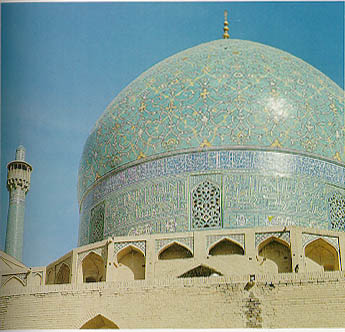A Brief History of Geometry and Decoration in Islamic Art

This chapter explores briefly the history and development of geometry, ornament, and decoration in Islamic Art. Most Islamic ornament is classified by the elements of which it is composed. They may be vegetal, geometric, epigraphic, figural, or a combination of these. Over the course of time, these ornaments underwent considerable transformations, reflecting the impact of local traditions and influences from the arts of foreign countries, and changed as tastes changed in the Islamic world at large. Among all these elements, geometry and symmetry hold primacy.
In the following pages, we will be looking at ten different examples from the seventh to sixteenth centuries that display the various uses of geometrical patterns, vegetal motifs, and symmetry in various ways and trace its development through the centuries. Please click here to begin.
Dome of the Rock Mosaic
Colored Tile Stucco Relief
Object Art and Textiles Calligraphy
Home

